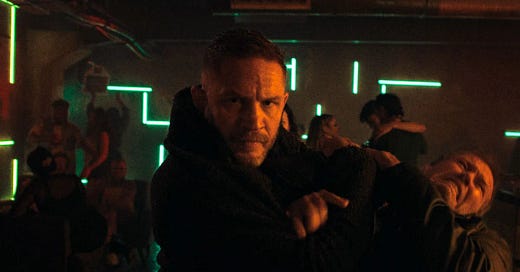'Havoc' Review: Frantic as all get out, but at what cost
Gareth Evans' crime thriller follows up the legacy of action-frenzied Raid films, and while a dazzling visual feast, its story juggles way too many plot lines to get invested
Production hell can make even the most promising movies a living nightmare. Any number of factors can cause a movie to get delayed or even cancelled, but it’s not always indicative of the final product. Stanley Kubrick’s Eyes Wide Shut (1997), for example, took 294 days to film over 579 calendar days, 19 days of which were reshoots. Since then, the movie’s lengthy production history is often seen as a point of pride amongst film nerds, defending that the time it took to make the film is clearly on the screen. Regardless though, sometimes the reasons are out of the filmmakers’ hands and at the mercy of the studio producing it. Such is the case of Gareth Evans’ Havoc (2025).
Believe it or not, filming wrapped on Havoc back in October 2021. On top of that, the film needed extensive reshoots, which were delayed due to the SAG-AFTRA strike, along with scheduling conflicts. Now that the film’s out of the worst of its tumultuous production history, the film is out, making it Gareth Evans’ first film since Apostle (2018). Regardless of the film’s success though, he’s still most well-known for the one-two punch of The Raid (2011) and The Raid 2 (2014), and judging by Havoc’s output, it will continue to remain that way. While Havoc contains a lot of the flash, commitment, and excitement that the Raid films handled with ferocious craftsmanship, the film’s plot stretches itself way too thin. It seems as if every ten minutes there’s a new character, a new plot line to set up, and new motivations to establish. Before you know it, you’re left with dozens of characters and little incentive to care about any of their plights.
Havoc attempts to center itself around Patrick Walker (Tom Hardy), a Homicide detective who’s in the pocket of Lawrence Beaumont (Forest Whitaker), a candidate for mayor who works in real estate and the father of Charlie (Justin Cornwell). Charlie is part of a gang of thieves whose recent retrieval of a batch of washing machines containing a hidden shipment of cocaine is intercepted by the police. In the crossfire, Patrick’s former colleague Cortez is critically injured, and Patrick makes it his mission to find whoever’s responsible. In the meantime, Patrick is also grappling with losing touch with his children and working through a difficult partnership with his rookie coworker Ellie (Jessie Mei Li). Working through the underground syndicate in order to find the culprit, Charlie is accused of murdering the head of a local Triad and it becomes Patrick’s mission to clear his name. On top of all of that, Patrick’s also trying to evade his estranged Narcotics squad partner Vincent (Timothy Olyphant), who killed an undercover cop during a drug theft that went wrong in the midst of everything else happening. Pay attention because there’s going to be a quiz later.
Havoc has all the technical prowess and Netflix’s resources at its disposal, yet no number of reshoots, second takes, and visual pizazz can forgive its inordinate lack of grace when telling its story. The problems with Havoc all extend to the screenplay (also penned by Evans) and how desperately adrift its characters are in a sea of plot points and cop movie clichés. It’s a shame, too, because Evans’ chops as an action director never falter with expertly precise camera movement and gleefully bloody set pieces helping to break up the frustration of its plot. The same can be said for Havoc’s performances, especially Hardy, who has fun with a smart aleck persona and gives the film a little more depth than your average run-of-the-mill Netflix fare. Everything else about the film, unfortunately, lacks the narrative consistency that makes crime thriller greats like Pulp Fiction (1994), Heat (1995), and Goodfellas (1990) so irresistibly rewatchable. Havoc, on the other hand, works off a blueprint in desperate need of a few more revisions.
C
Feature image credit to Netflix via Cinematic Panic




